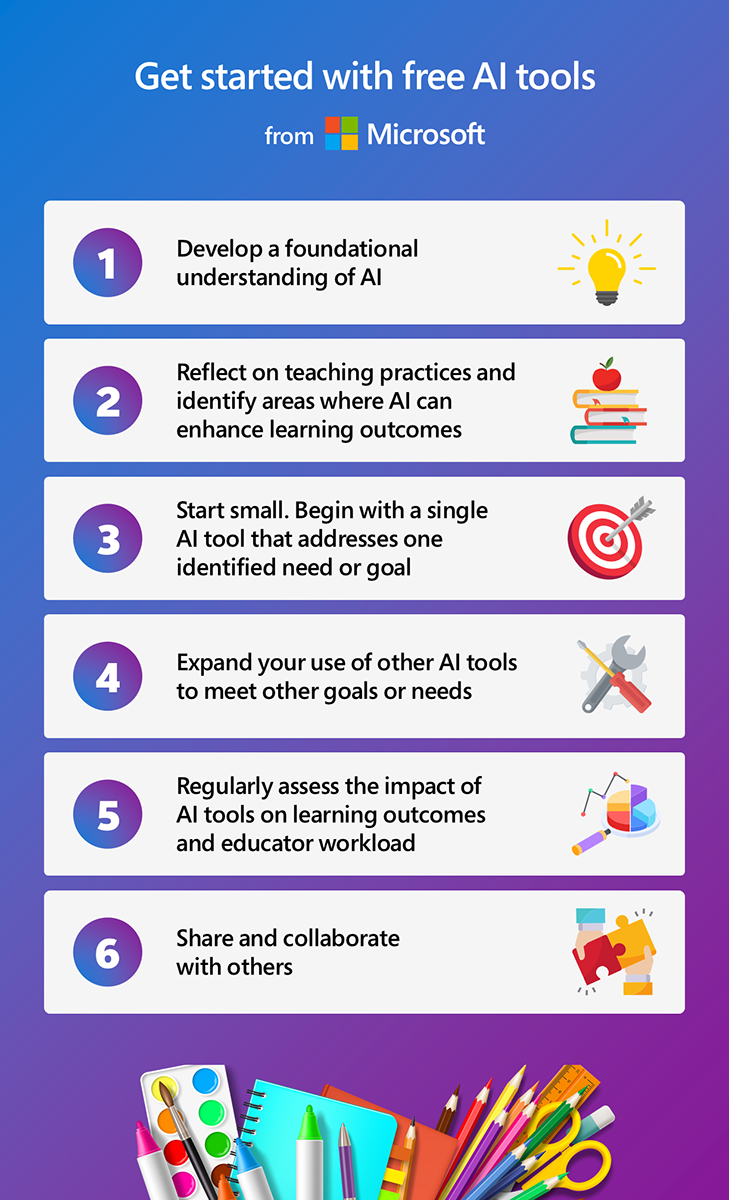Get started with AI tools in school
Educators can focus on practical steps to integrate AI tools effectively in their classes. Before using AI tools, it’s crucial to have a foundational understanding of AI. Educators should familiarize themselves with basic concepts and terminology. The: AI for educators learning path provides a solid grounding in AI.
Additionally, use the Classroom Toolkit: Unlock generative AI safely and responsibly to help learners gain skills like:
- Fact-checking
- Cultivating good digital habits
- Safeguarding their data privacy
- Adopting strategies to manage their mental wellbeing
Once educators understand the basics of AI, they should reflect on their teaching practices and identify areas where AI can enhance learning outcomes. Additionally, consider how AI can help streamline administrative tasks.
Questions educators should consider include:
- What are specific needs for my learners?
- What goals should I aim to achieve with the help of AI?
- Are there repetitive tasks that consume a significant amount of my time?
- How can AI tools help streamline tasks like grading, attendance tracking, or scheduling?
- How can AI help with my workload to give me more time for direct learner interaction?
Clearly defining their needs and goals will guide educators in their selection of AI tools to use.
To gain confidence with their use of AI tools, educators can start small. They can begin with a single AI tool that addresses one of their identified needs or goals. For instance, if an educator wants to improve learner engagement, they might start with Khanmigo to seek help on designing lesson hooks, identifying real-world examples, or connecting lessons to learners’ interests. Educators can implement the tool in a small, manageable way and gradually expand its use as they become more comfortable.
After they successfully integrate an AI tool, educators can expand their use to other tools that meet other goals or needs. As they gain confidence with their use of AI, educators can gradually build a toolkit of AI resources that enhance various aspects of their teaching. Educators should stay focused on how the tools can ease their workload and support and enrich the learning environment.
As they use AI tools, educators should be sure to regularly assess the impact of the AI tool on their learners and their workload. Collect feedback from learners and observe any changes in their engagement and performance. Additionally, educators should evaluate how AI contributes to their efficiency in completing repetitive tasks. Use this data to make informed decisions about continuing, modifying, or expanding the use of AI tools.
And, finally, educators can share what they learn with others. Collaboration can lead to more effective and innovative uses of AI. Share experiences, challenges, and successes with colleagues. Join professional learning communities or online forums where educators discuss AI in education. Additionally, share experiences with Microsoft’s free AI tools on social media with hashtag #MicrosoftEdu.

Get started with AI tools from Microsoft infographic accessible PDF version